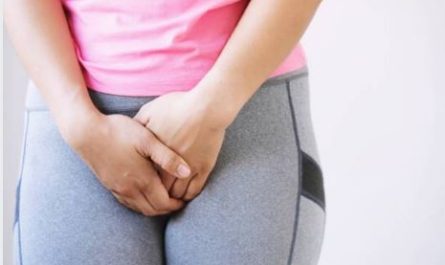A lump in the groin area of a male can have various causes. Some possible causes of a lump in the groin area in males include.
Hernia
One common cause of a lump in the groin area is a hernia. A hernia occurs when an organ or tissue pushes through a weak spot in the surrounding muscle or connective tissue. Inguinal hernias are the most common type and can cause a visible or palpable lump in the groin.
Lymphadenopathy
Swollen lymph nodes in the groin area can present as lumps. Lymph nodes may become enlarged due to infection, inflammation, or underlying medical conditions.
Lipoma
Lipomas are benign, fatty growths that can occur anywhere on the body, including the groin area. They are usually painless and feel soft to the touch.
Cysts
Cysts are fluid-filled sacs that can develop in the groin area. They may be caused by blocked hair follicles or oil glands. Sebaceous cysts and epidermoid cysts are common types that can occur in this region.
Abscess
An abscess is a localized collection of pus caused by an infection. It can develop in the groin area and present as a painful lump.
Lumps related to the testicles
Conditions such as testicular torsion, epididymitis, or hydrocele can cause lumps or swelling in the groin area.
It’s important to note that these are general examples, and a medical evaluation is necessary to determine the exact cause of the lump in the groin area. If you notice a lump or have any concerning symptoms, it is recommended to consult with a healthcare professional for a proper diagnosis and appropriate treatment.
Symptoms of Hernia causing Lump in Male Groin
When a hernia occurs in the groin area of males, it is known as an inguinal hernia. The primary symptom of an inguinal hernia is the presence of a lump or bulge in the groin or scrotum. Here are some additional symptoms associated with a hernia causing a lump in the male groin:
Lump or bulge – The most noticeable symptom is the appearance of a lump or bulge in the groin or scrotum. This lump may become more pronounced when standing, coughing, or straining, and it may recede when lying down. The lump is typically located on either side of the pubic bone or along the inguinal canal.
Discomfort or pain
The lump may cause discomfort or a dull ache, particularly when lifting heavy objects, coughing, or engaging in physical activity. The pain may range from mild to severe, and it can sometimes extend into the lower abdomen or testicles.
Weakness or pressure
Some individuals may experience a sense of weakness or pressure in the groin area or lower abdomen. This sensation may worsen with physical exertion.
Swelling or enlargement
The affected area may become swollen or enlarged due to the hernia. This swelling can be noticeable and may cause the scrotum to appear larger on the affected side.
Groin heaviness or dragging sensation
Some men with an inguinal hernia may feel a heaviness or dragging sensation in the groin, as if something is pulling or tugging.
It’s important to note that not all hernias cause pain or discomfort. Some hernias can be asymptomatic and are discovered incidentally during a routine physical examination. However, if you notice a lump in the groin area or experience any symptoms, it is advisable to seek medical attention for a proper evaluation and diagnosis. A healthcare professional can determine the type and severity of the hernia and recommend the appropriate treatment, which may include observation, lifestyle modifications, or surgical repair.
Symptoms of Lymphadenopathy causing Lump in Male Groin
Lymphadenopathy refers to the swelling or enlargement of lymph nodes, which are small bean-shaped structures that play a crucial role in the body’s immune system. When lymph nodes in the groin area become enlarged, they can cause a lump or swelling. Here are some common symptoms associated with lymphadenopathy causing a lump in the male groin:
Lump or swelling
The primary symptom is the presence of a lump or swelling in the groin area. The lump may be felt beneath the skin and can vary in size. It is usually firm or rubbery to the touch.
Enlarged lymph nodes
The lymph nodes in the groin area may become visibly larger than their normal size. They may be tender or painful when touched.
Redness or warmth
In some cases, the skin over the affected lymph nodes may appear red or feel warm to the touch. This can be an indication of inflammation in the area.
Discomfort or pain
Enlarged lymph nodes in the groin area can cause discomfort or pain. The pain may be localized to the affected area or radiate to the surrounding regions.
Other associated symptoms
Depending on the underlying cause of lymphadenopathy, additional symptoms may be present. These can include fever, fatigue, night sweats, unexplained weight loss, or other signs of infection or inflammation.
It’s important to note that lymphadenopathy in the groin area can be caused by various factors, including infection, inflammation, or even malignancies such as lymphoma. If you notice a lump in the groin or experience any concerning symptoms, it is advisable to consult a healthcare professional for a proper evaluation and diagnosis. They will perform a thorough examination and may order additional tests, such as blood work or imaging studies, to determine the underlying cause and recommend appropriate treatment.
Symptoms of Lipoma causing Lump in Male Groin
A lipoma is a benign (non-cancerous) growth of fatty tissue that can develop anywhere in the body, including the groin area. When a lipoma occurs in the male groin, it can cause a lump or swelling. Here are some common symptoms associated with a lipoma causing a lump in the male groin:
Lump or swelling – The primary symptom is the presence of a soft, movable lump beneath the skin in the groin area. The lump is typically painless and feels rubbery or doughy to the touch. It may vary in size and can be easily pushed or moved around.
Slow growth – Lipomas generally grow slowly over time. The lump may start small and gradually increase in size over months or even years.
Discomfort or pain – In most cases, lipomas are painless. However, if the lipoma presses against nearby nerves or tissues, it can cause mild discomfort or aching. This is more likely to occur if the lipoma grows larger or becomes located in a sensitive area.
Cosmetic concerns – Depending on the size and location of the lipoma, it may cause cosmetic concerns or self-consciousness, especially if it is visible or affects the symmetry of the groin area.
Rare complications – While extremely rare, lipomas can occasionally cause complications such as infection, inflammation, or compression of nearby structures if they grow excessively large or become twisted (known as a pedunculated lipoma). These complications can lead to pain, redness, and other symptoms that require medical attention.
Conclusion
It’s important to note that lipomas are usually harmless and do not require treatment unless they cause discomfort or interfere with daily activities. However, if you notice a new lump in the groin or have concerns about a pre-existing lump, it’s always recommended to consult with a healthcare professional for proper evaluation and diagnosis. They can determine if the lump is indeed a lipoma and provide guidance on any necessary management or further testing.




